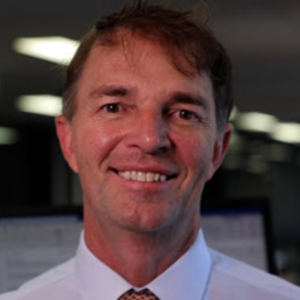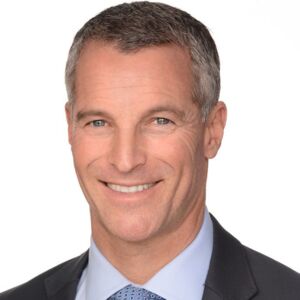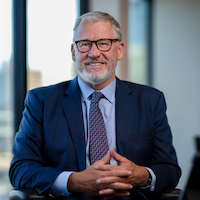Mine Super navigates market minefield
By Elizabeth Fry

Mine Super head of investment strategy Sean Anthonisz is keeping an eye on high-yield bonds given the prospect of aggressive monetary tightening by central banks and recession.
Anthonisz believes opportunities in credit are likely to follow higher interest rates and a sharp slowdown, or, in the unlikely event that a soft landing seems achievable.
"Rather than using treasuries or equities, high yield can be a nice way to express a view that inflation might be moderating, and a recession might be over - or a soft landing achievable - we're obviously not there yet," he says.
The investment strategist notes that two years ago, the world was worried about low inflation, the Philips curve debate, and the prospect of a slow retracement from globalisation.
"Then, in 2020, with Covid, we speculated about an alphabet-soup of recoveries (quick recovery V, double-dip W, stagnant growth L, and a protracted dip U). This year, Russia has invaded Ukraine, and we are talking about the Fed's ability to shape inflation expectations, the likelihood of a recession, and fading economic openness," he adds.
Following the pandemic, the $13 billion super fund traded tactically in Australian dollars trailed the Fed's liquidity support in investment-grade credit and rebalanced equities opportunistically.
"Although that was profitable, we learned some important lessons about latency in decision processes ... we learned that decisional and operational preparation is an investment imperative, that forming views only matters if it's practicable," says Anthonisz.
Where will the investment debate be in 12 to 18 months?
"I suspect few investors forecasted the invasion of Ukraine, or Covid, and the economic and market impacts. Using history as a guide. I guess we won't be talking about the same things," he notes.
"These are unusual times and they present unusual opportunities, he says, adding that Mine Super faces constraints, as do many funds that operate under the Your Future Your Super performance test.
Dealing with benchmarks
Asked if YFYS has changed the way he sets strategy, Anthonisz says Mine Super is conscious of tracking errors against the YFYS benchmarks, which has created some constraints for the fund.
"For example, in our process, emerging markets and developed markets equities are distinct basis sub-asset classes. YFYS treats them both as international equities benchmarked against MSCI ACWI ex-Australia. So, setting policy portfolios that incorporate long-term views on EM necessarily generates YFYS tracking error - that's one unfortunate outcome of the test."
Private equity is another example. "In the long-term, we think of private equity as leveraged small caps with infrequent pricing but the test places this against a listed broad index. This leaves the asset class - already very idiosyncratic - as a large contributor to active risk."
Anthonisz claims that fund characteristics should shape the constraints around private market allocations. 'Funds with heavy inflows need to maintain high search costs and continually compete for new deals," he says.
"Of course, funds in neutral or outflow cannot readily reshape their private exposures through new allocations ... and when equity markets collapse, the allocation to illiquids, rises mechanically."
Still, there is a silver lining with the new rules.
There is an increased focus on budgeting active risk at the portfolio level. "Tactically trading in high-yield bonds, for example, needs to be calibrated if your equity managers carry a persistent small-cap bias," the strategist argues.
By that, he means investors view high-yield bonds as the bond market's version of small-cap stocks, and they generally expect both markets to move in tandem.
"The increased focus on risk is obviously not a bad thing: However, the YFYS test has brought about some less-than-ideal constraints for policy portfolio construction."
As for Mine Super's strategic asset allocations (SAA), the next review will be in August, and the strategy head and the investment chief Seamus Collins, are formulating that now.
"We are not anticipating large moves in the SAA, although like most funds, Mine Super has a dynamic asset allocation to manage its mid-term views, and we use TAA for shorter-term opportunities," he says.
The duo is examining issues like the fund's allocation to emerging markets.
The SAA process examines liquidity. The fund also uses liquidity stress testing on actual asset allocations based on a range of historical and hypothetical scenarios, including a scenario based on the market response to Covid and the Early Release Scheme.
Yet, Anthonisz argues that the stress testing asset owners do around liquidity rarely captures the opportunity costs.
Of course, decision-process improvement and low latency suggest the need for more quantitative analysts.
Finding quants
Mine Super continues to build capabilities in the quant space. For instance, the fund's tactical and dynamic asset allocation is increasingly informed and driven by quantitative techniques.
"That means you start to build new quant roles and think of new structures and processes to control risk. It also involves some evolution in the investment governance and risk management frameworks and policies," he says.
He should know.
Before being appointed head of investment strategy - a role he has held for over two years - Anthonisz was a senior quantitative analyst at the fund.
He previously managed quant trading and research programs in investment banking and hedge fund environments and has an amphibious relationship with academia. That's because Anthonisz is a resident practitioner at the University of Sydney and, along with leading practitioners from other super funds, is involved in the Super Quant Forum.
He argues that in Australia, few Finance PhD students begin with a plan to work in the industry - and the type of technical training they receive is driven by the need to publish in specific areas of academic interest, often corporate governance.
He says a variety of university degrees and PhD programs harbor smart and technically capable people; the trick is finding those interested in investments and the mission of super.



